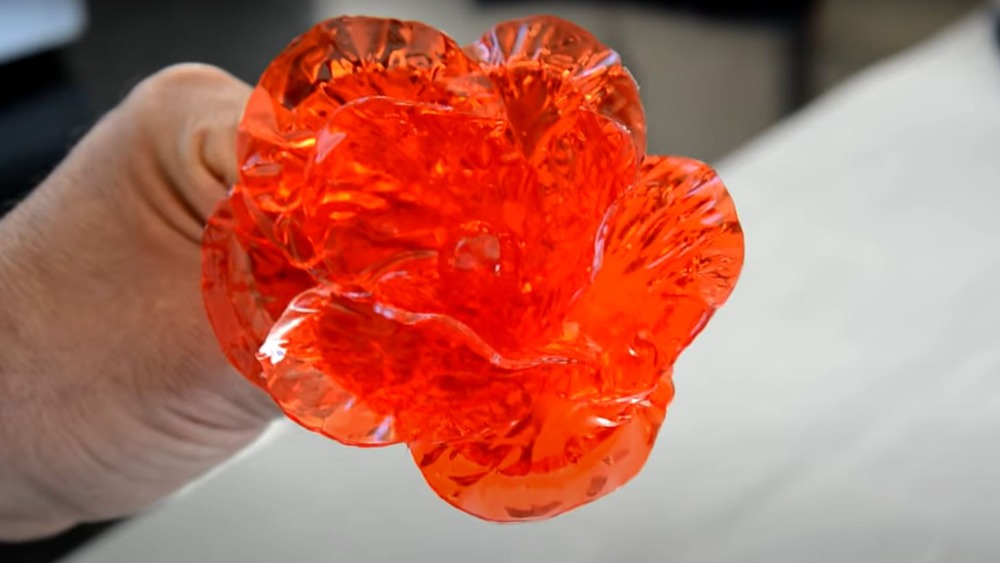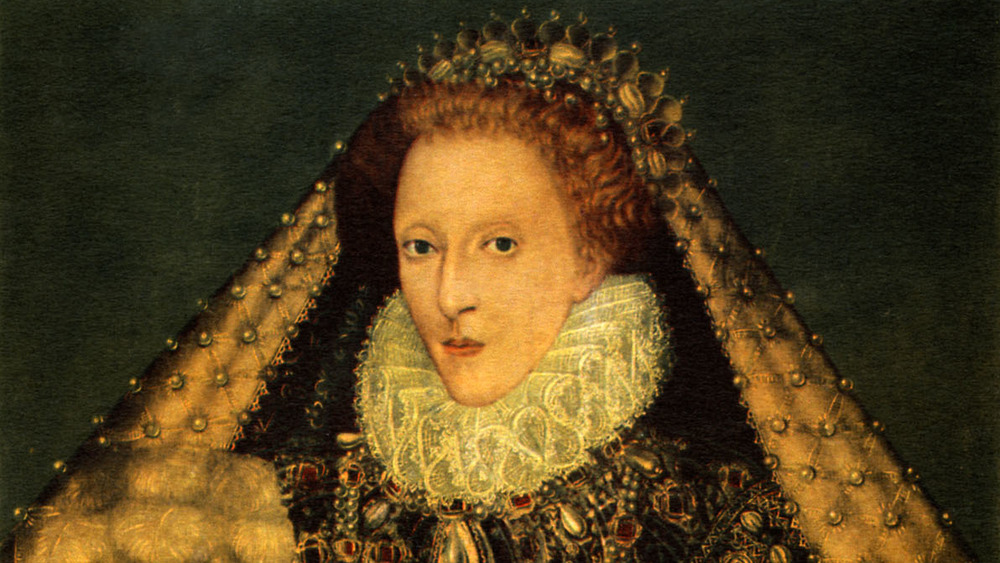What You Didn't Know About The Origin Of Sugar Art
If you hear the words "sugar art," what exactly comes to mind? Is it filigrees of frosting framing a fluffy birthday cake? Spots of hard sugar speckling the face of a gingerbread man and giving him eyes and a nose? Something elaborate sprung from grandma's paperbound recipe book at Christmastime, or a childhood baking activity involving gummy worms and animal cookies?
Whatever it is, it probably isn't anything at all like "sugar art" fashioned for King James II by the Earl of Castlemaine on January 14, 1687. In a feat of amazingly intricate, elaborate sugarcraft, the Earl's "sugar monument" was a multi-tiered piece of 3D art crafted from hardened sugar and featuring flying angels triumphant above a fallen beast, with a king's crest on top bordered by rearing horses. You can see an illustration of it on the British Museum website, and yeah, it's pretty crazytown.
The process of refining sugar from sugar cane made it to Europe in the 1400s, at the end of the medieval ages. Art prints such as Saccharum, circa 1580-1605 (viewable via the British Museum, as well), depict the entire sugar refinement process. Aside from simply being a sweetener, sugar became a medium for temporary art, similar to modern-day sand art or ice sculptures. Moving into the Elizabethan era, the presentation of desserts after meals became an event in and of itself. Fruit, jelly, and other sweets were placed in separate rooms like centerpieces, and from this, sugar art evolved.
Edible art for the wealthy
Of course, it was the wealthy who could afford sugar, much like port or red meat. This is part of the reason why political satire of the time depicted wealthy people as fat and gout-ridden, such as the artwork depicted on the Wiley Online Library. Queen Elizabeth I herself, who ruled from 1558 to 1603, had something of a sweet tooth, as Future Learn says. She loved sweet dishes — the more complex, the better. For her, it was also an indication of power and status, given all the time, effort, and skill that went into crafting the dish and its ingredients.
This was part of sugar's, and sugar art's, appeal: the supposed exoticism of the ingredients. Unlike honey, which was ubiquitous and had been used as a sweetener for centuries, sugar cane came from far off lands like Madeira and Barbary. It was imported in "loafs," and then melted into liquid that could be molded into various shapes. Ingredients could be added to it, such as milk and eggs, to make cakes and other baked goods. In its liquid form it could be fashioned into some extremely convoluted and skillfully-built shapes and designs. And of course, eaten.
Sugar art is making something of a resurgence, as this Washington State Sugar Artist Cake Show on YouTube attests. Feel free to give it a try if you'd like. At the very least, you can just gobble up whatever you make.

